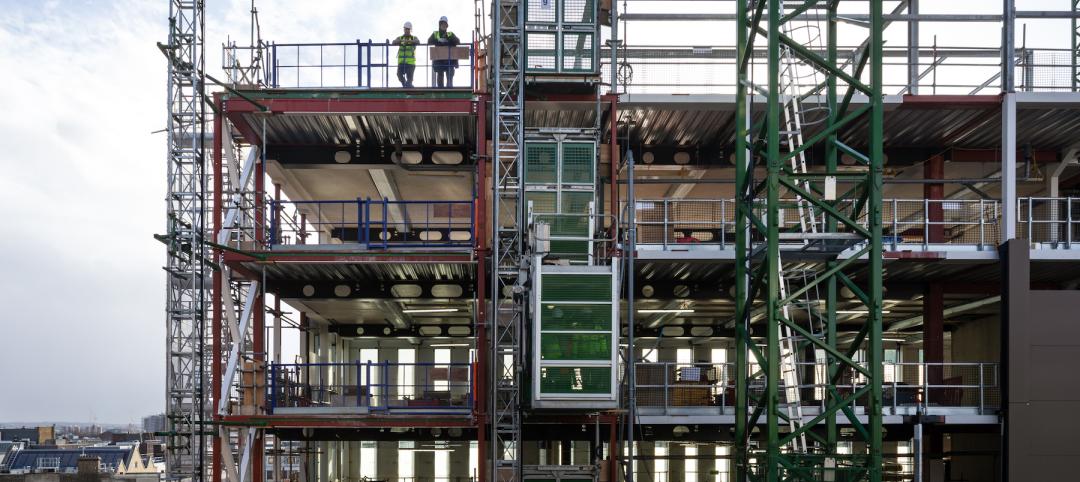When people talk about digital twin, it’s usually in the context of a single product or building. But Michael Jansen’s ambition is to digitally replicate the entire world, or at the very least every smart city.
Jansen is Chairman and CEO of Chicago-based Cityzenith, whose Smart World suite of 5D software platforms map and visualize data provided by metropolises to an intuitive real-time 3D simulation.
Cityzenith brought Smart World to market in 2009 and rolled out its latest version, Smart World Pro, last year. Users of the newer product can aggregate BIM, CAD, GIS tools, spreadsheets, documents, sensor feeds, and even social media posts, all of which can be dragged and dropped onto the platform.
Jansen describes Smart World Pro as “a design-to-demo digital twin,” whose features include an all-in-one dashboard, universal data importing, a natural language search, and a “Mapalyze” app suite of analytical tools that allows users to run project analysis “on the fly” and export and share results quickly. An application from Unity Technologies that powers the platform’s back end provides greater flexibility, says Jansen.
Smart World Pro pulls data from a variety of sources, including large building owners (one of the platform’s users is Cushman & Wakefield), large AEC firms, data streams from IoT sensors, and public information services for cities, counties, and states.
Cityzenith has amassed curated public and commercial data sets for “several thousand” cities, and fully loaded 3D models for “hundreds” in a dozen countries. Last December, the Indian state of Andhra Pradesh selected Smart World Pro as its 3D City Information Model for the development of Amaravati, a new $6.5 billion smart city capital that Foster + Partners and Surbana Jurong have designed.
“Amaravati will be born as a digital twin, the first entire city that I know of to do that in the world,” says Jansen.
Smart World Pro is also being used for Hinkley Point, a 3.2-gigawatt power plant that is the largest infrastructure project in the U.K.
Cityzenith takes what Jansen calls an “enterprise approach” to its pricing. First-time customers can get their foot in the door with a $20,000 package. Using the platform for projects costs between $30,000 and $75,000, and mapping metros can run into the hundreds of thousands of dollars.
The company has raised more than $10 million and is profitable to the point where currently it isn’t seeking investor capital. As for growth, Cityzenith has somewhere between 30 and 40 customers, but Jansen is thinking much bigger when he says his platforms target “everyone in the building industry” that manages assets.
“The problem that Smart World Pro solves is the complete lack of interoperability among tools,” says Jansen. “The industry needs a single pane of glass for all of the tools being aggregated.”
Related Stories
Green | Jul 26, 2022
Climate tech startup BlocPower looks to electrify, decarbonize the nation's buildings
The New York-based climate technology company electrifies and decarbonizes buildings—more than 1,200 of them so far.
Smart Buildings | Jun 1, 2022
Taking full advantage of smart building technology
Drew Deatherage of Crux Solutions discusses where owners and AEC firms could do better at optimizing smart technology in building design and operations.
Sponsored | BD+C University Course | May 10, 2022
Designing smarter places of learning
This course explains the how structural steel building systems are suited to construction of education facilities.
Sponsored | BD+C University Course | May 3, 2022
For glass openings, how big is too big?
Advances in glazing materials and glass building systems offer a seemingly unlimited horizon for not only glass performance, but also for the size and extent of these light, transparent forms. Both for enclosures and for indoor environments, novel products and assemblies allow for more glass and less opaque structure—often in places that previously limited their use.
Architects | May 3, 2022
A U.K.-based design firm flaunts industrialized construction as it expands into U.S.
Bryden Wood wants to set up a network for manufactured components for repeatable building types.
Concrete Technology | Apr 19, 2022
SGH’s Applied Science & Research Center achieves ISO 17025 accreditation for concrete testing procedures
Simpson Gumpertz & Heger’s (SGH) Applied Science & Research Center recently received ISO/IEC17025 accreditation from the American Association for Laboratory Accreditation (A2LA) for several concrete testing methods.
Sponsored | BD+C University Course | Apr 19, 2022
Multi-story building systems and selection criteria
This course outlines the attributes, functions, benefits, limits, and acoustic qualities of composite deck slabs. It reviews the three primary types of composite systems that represent the full range of long-span composite floor systems and examines the criteria for their selection, design, and engineering.
Wood | Apr 13, 2022
Mass timber: Multifamily’s next big building system
Mass timber construction experts offer advice on how to use prefabricated wood systems to help you reach for the heights with your next apartment or condominium project.
AEC Tech | Apr 13, 2022
Morphosis designs EV charging station for automaker Genesis
LA-based design and architecture firm Morphosis has partnered with automotive luxury brand Genesis to bring their signature brand and styling, attention-to-detail, and seamless customer experience to the design of Electric Vehicle Charging (EVC) Stations.
AEC Tech | Apr 13, 2022
A robot automates elevator installation
Schindler—which manufactures and installs elevators, escalators, and moving walkways—has created a robot called R.I.S.E. (robotic installation system for elevators) to help install lifts in high-rise buildings.
















